Recycled Glue Sticks
Recycled Glue Sticks
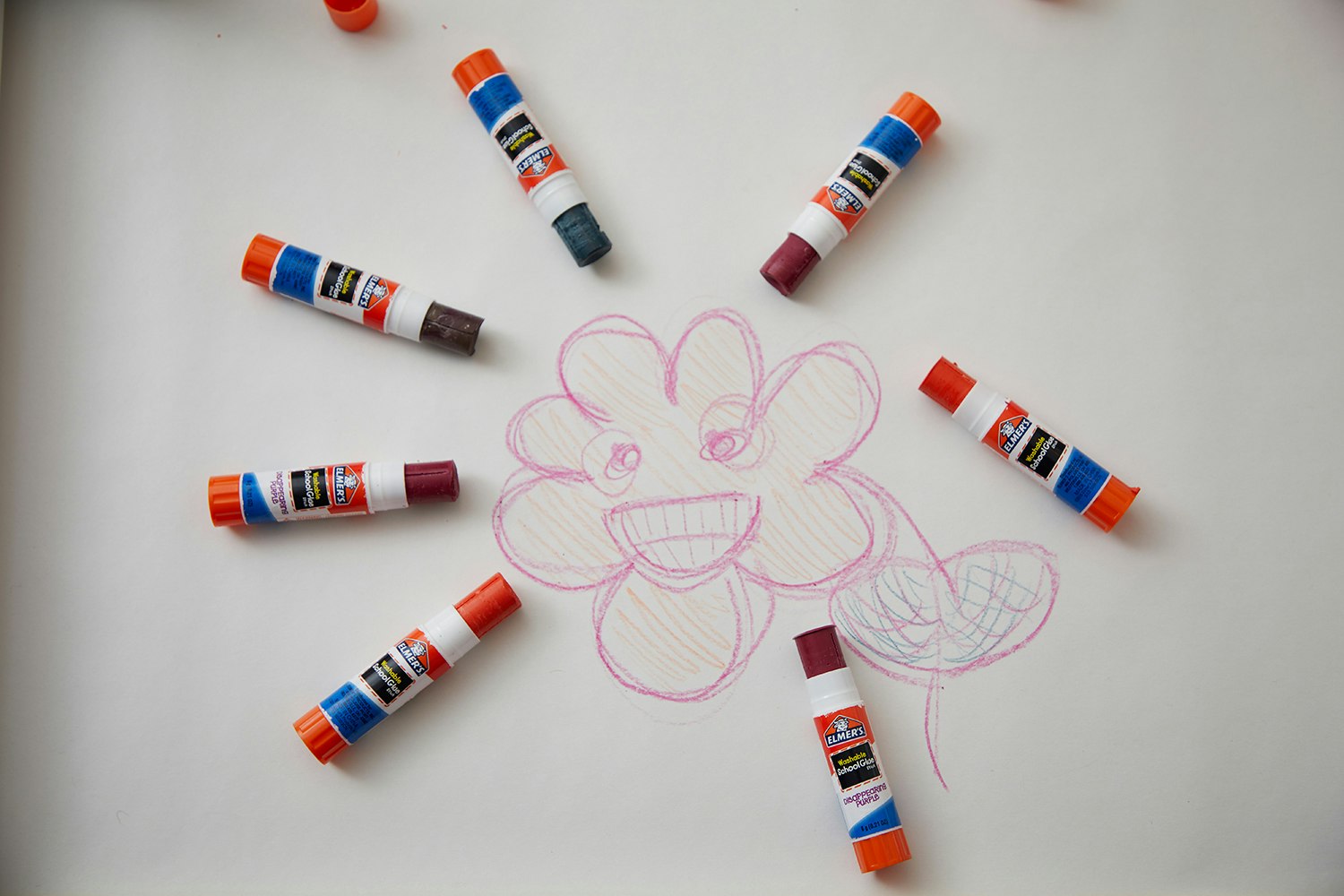
This activity is a great way to teach kids the concepts of reduce, reuse and recycle. Instead of throwing away old crayons, they’ll be recycling them into empty Elmer’s glue sticks to create new crayons. Please note, this activity requires using a heating element (such as a stove), so adult supervision will be required.
School Year: Reception–5
Subjects: Art, Environment, Science
Activity Time: 1 hour
Supplies
- Empty Elmer’s Glue Sticks (set up a recycling bin to collect them prior to the activity)
- Old crayons
- Empty glass bottles or jars (we recommend using glass salad dressing containers)
- Heating element to melt crayons (like stove) ADULT SUPERVISION WILL BE REQUIRED
Directions
Rinse out the empty glue sticks. Make sure not to damage the stem inside the glue stick. Place the clean glue sticks on paper towels to dry completely.
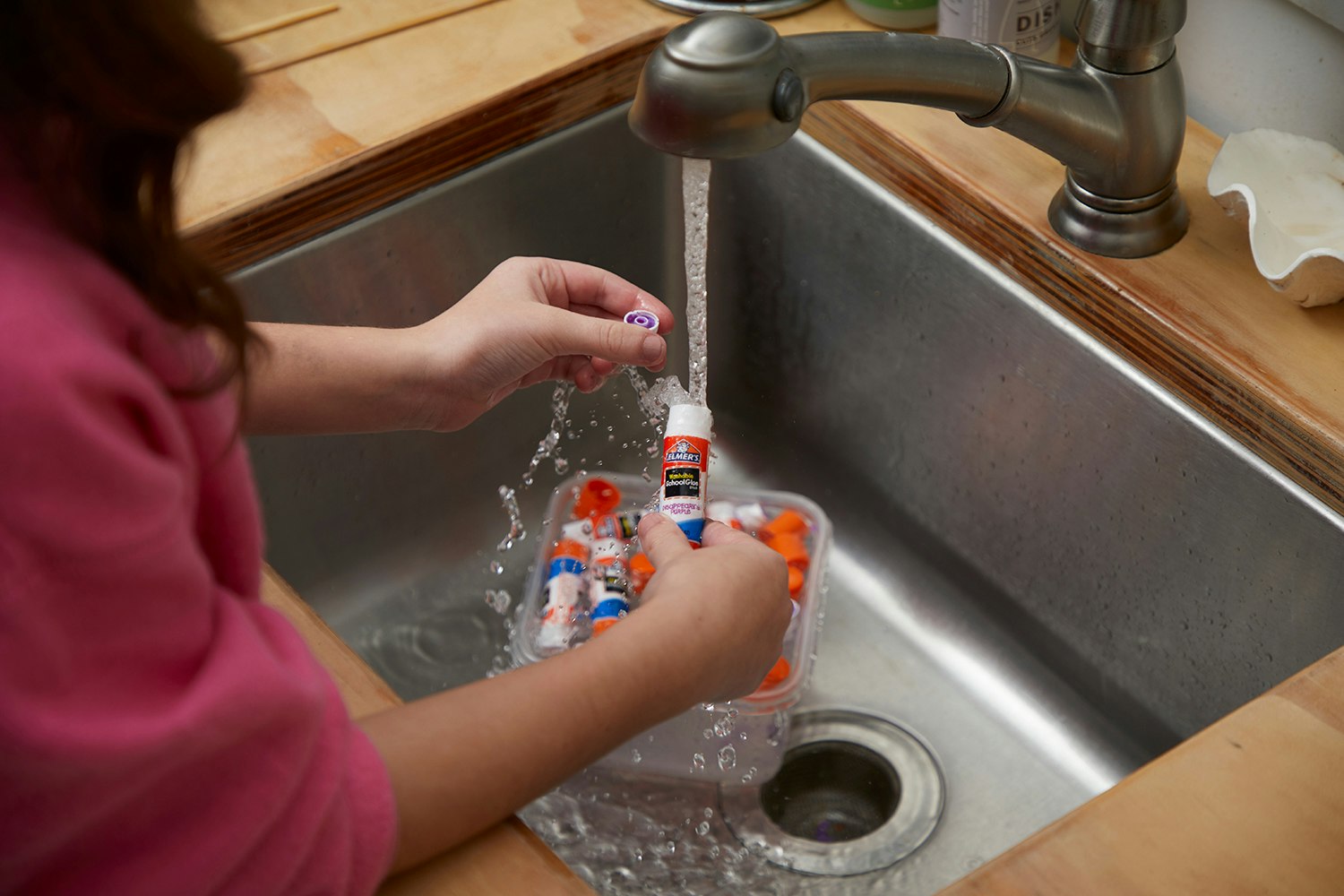
Next, sort the old crayons by placing the pieces into groups according to colour. Peel the labels off the crayons.
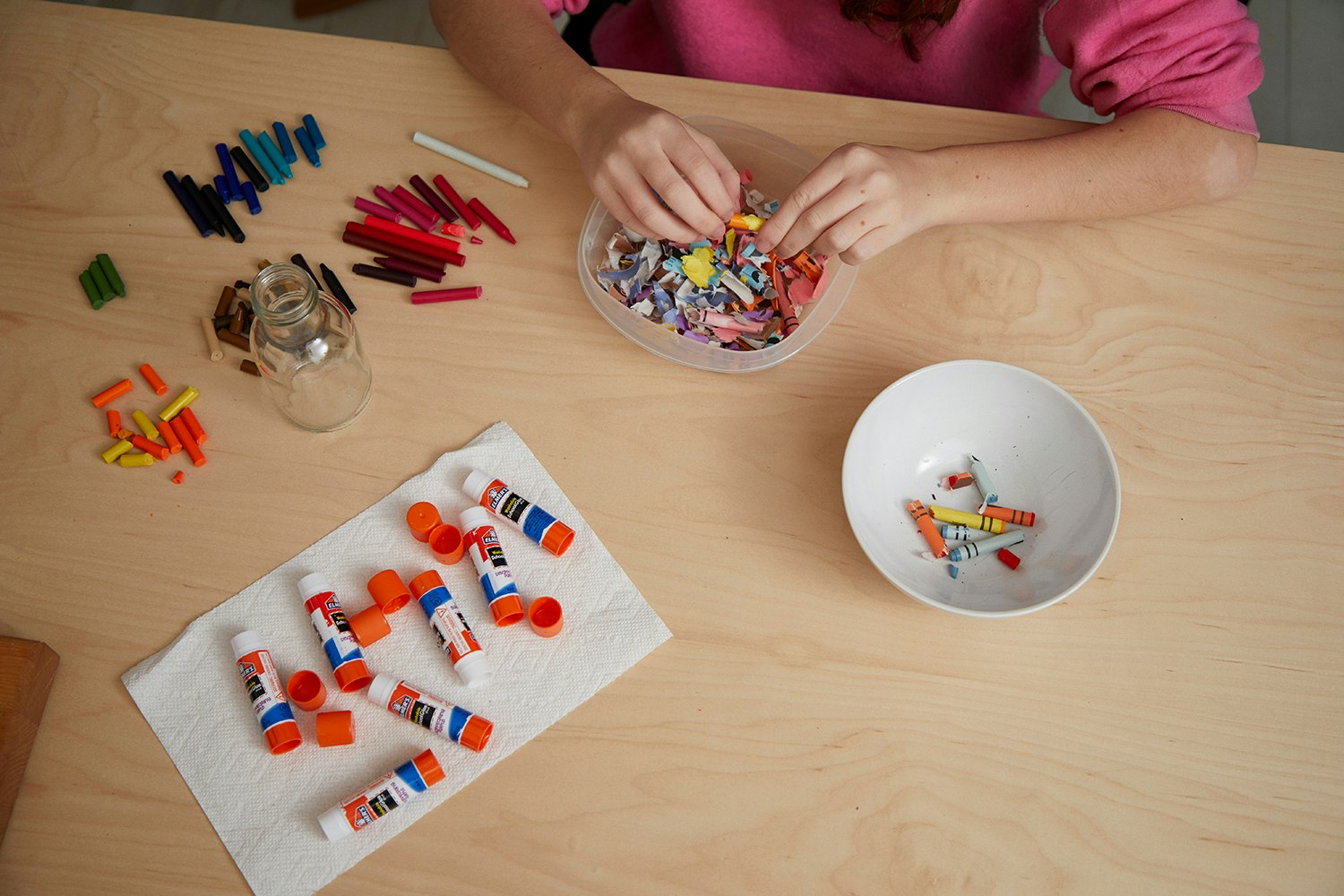
ADULT SUPERVISION REQUIRED: Heat some water in a pan so that you can melt the old crayons. A shallow pan works best. The water doesn’t have to boil to melt the crayons. Low heat for approximately 15 minutes. For younger children, an adult should perform this step.
While the water is heating, place the crayon pieces into the salad dressing bottles according to colour. You can create multi-coloured crayons by pouring different coloured wax into the glue stick, but each bottle should contain crayon pieces of the same (or almost the same) colour.
Place the salad dressing bottles with crayons inside into the pan with water and watch the crayons melt.
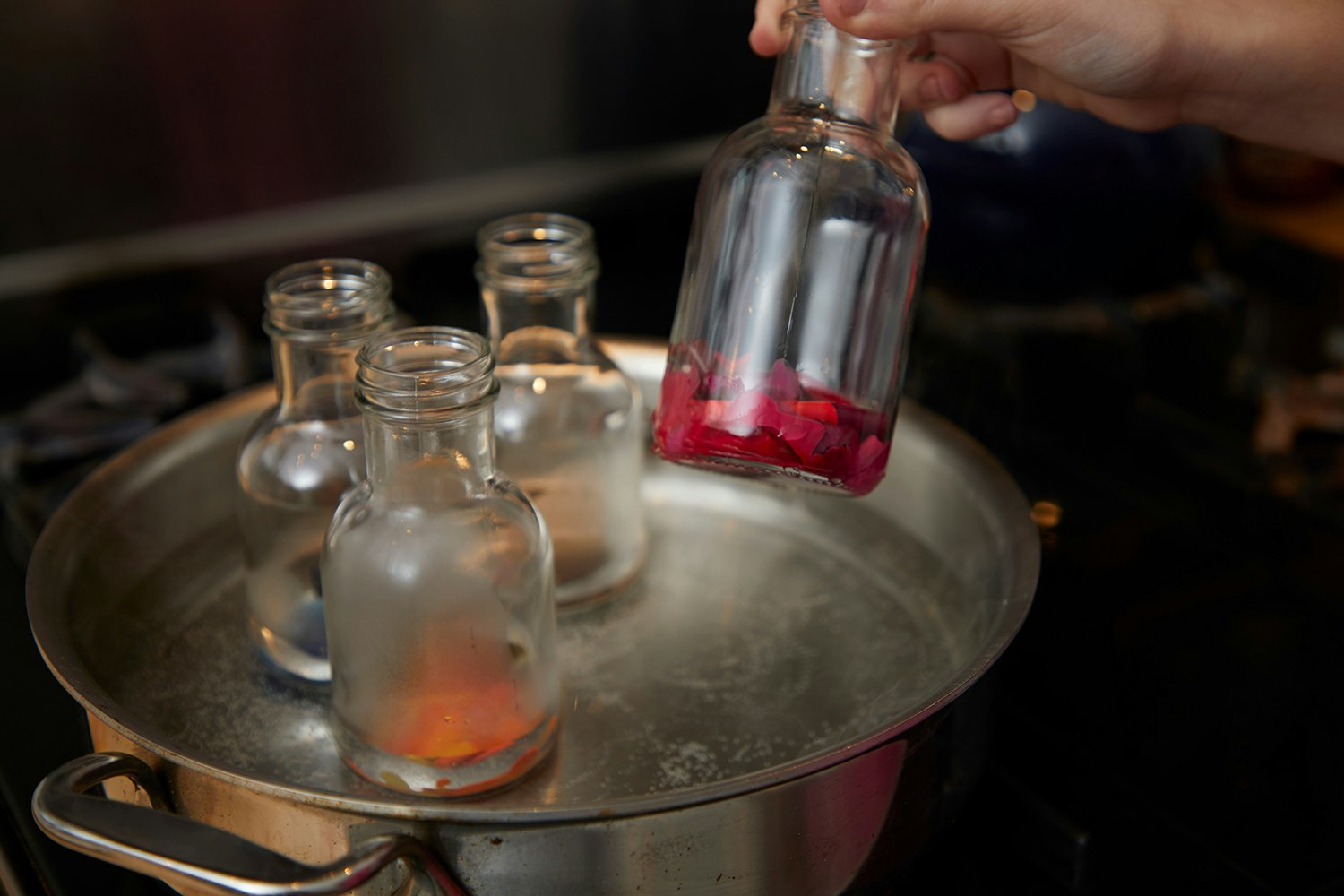
Pour the melted crayon wax carefully into the empty glue stick containers. Important note: At a low heat, the salad dressing bottles should not be too hot, but check and make sure before you let young children do the pouring.
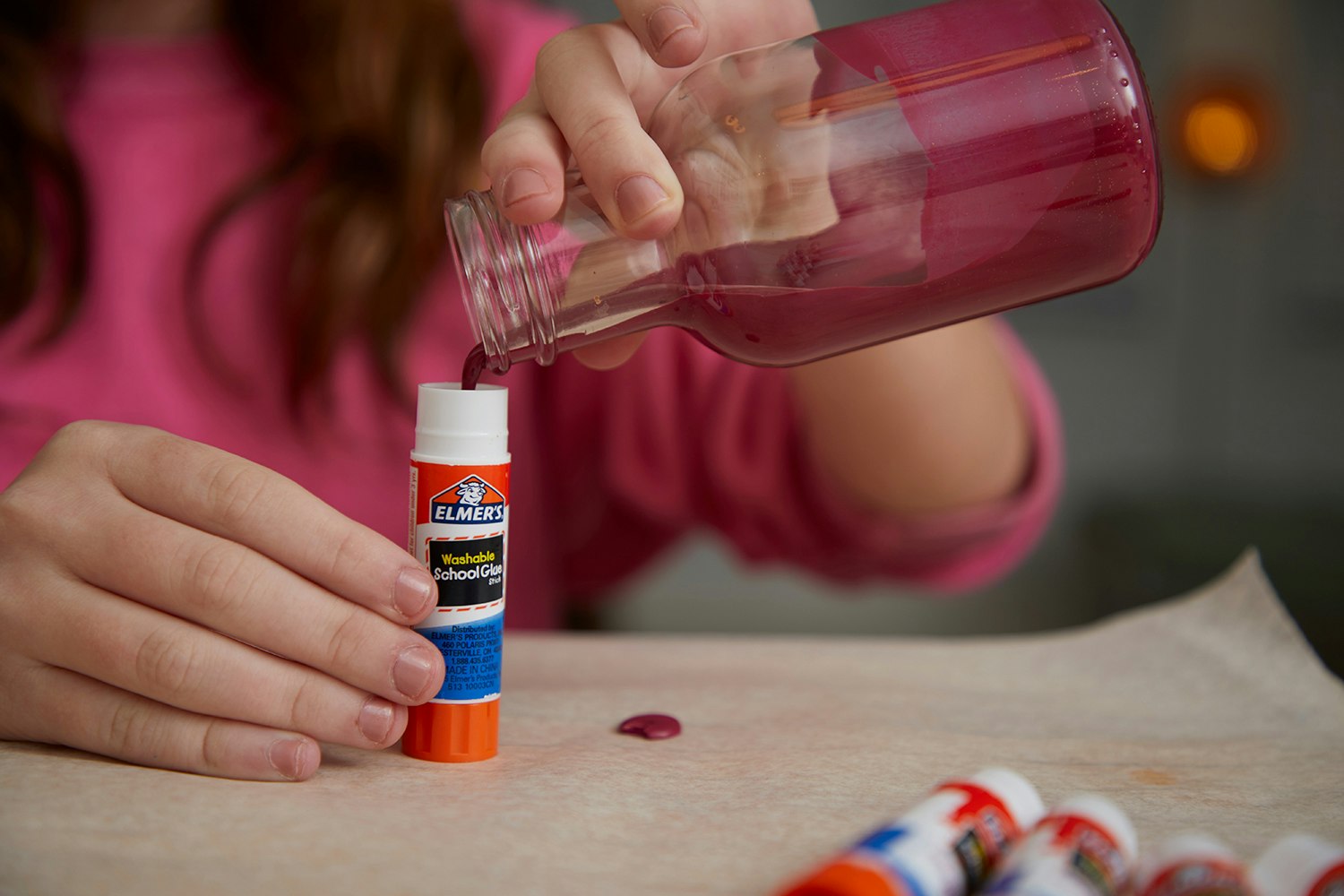
Instruct the children not to twist the bottom of the glue stick until the wax has completely hardened. Once the wax is cool and hard, you can twist the bottom and your new crayons will be ready to use. Go ahead and use your new crayons to draw some colourful illustrations!
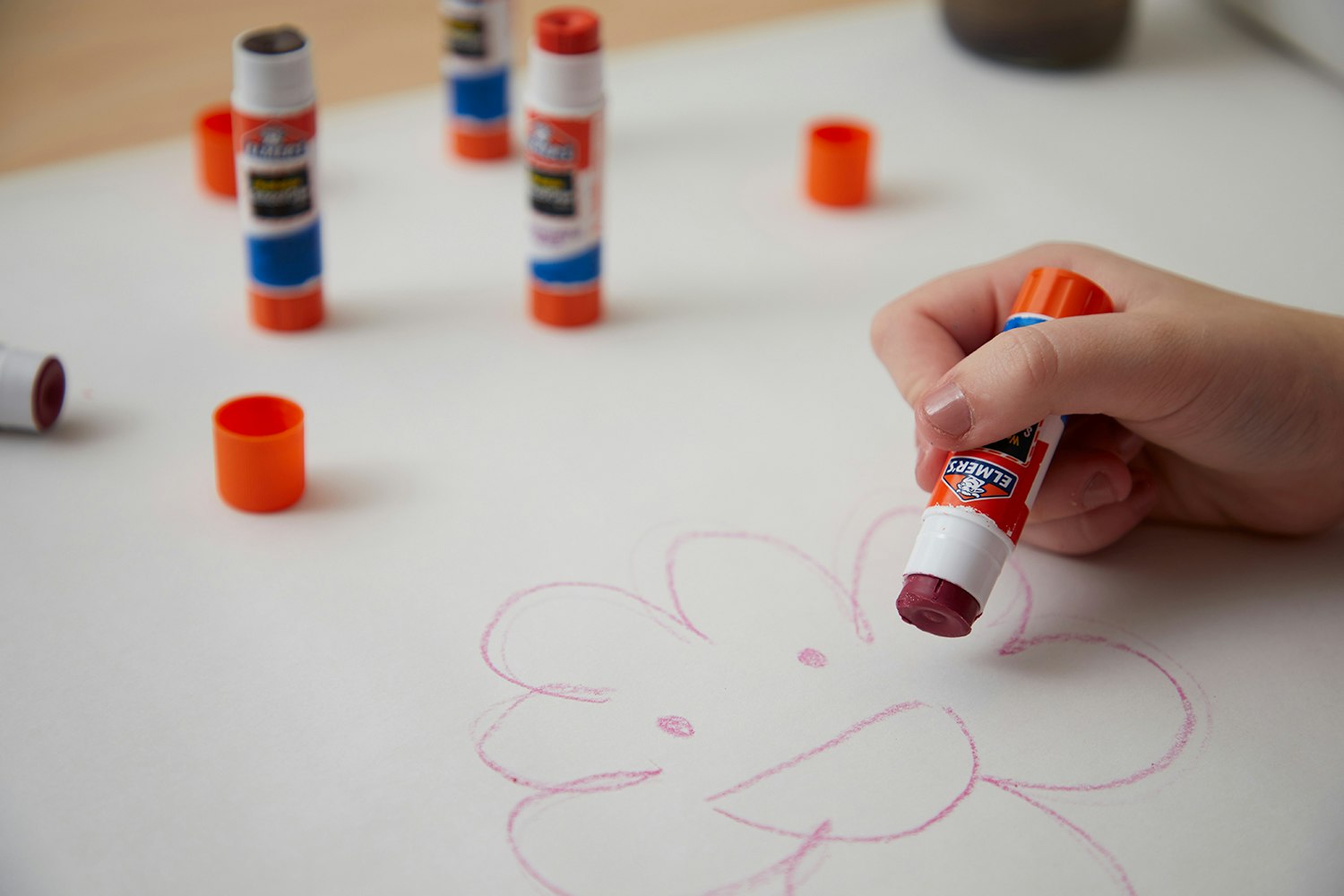
Additional Learning
- As the water is heating, take this chance to explain states of matter with your young learner. Explain that water is a liquid, crayons are solids, and the steam they see from the heated water is a gas. Ask them to predict what will happen to the crayons when the heat is applied. Ask them what they think will happen when the melted wax cools again.
- Provide time for students to create a picture with their recycled crayons to demonstrate the meaning of reduce, reuse and recycle. Ask them to create a poster that demonstrates why it is important to consider our environment before we discard items that may otherwise be reused or recycled.
- You can also ask your young learners: Can you think of something you’ve discarded that you might have been able to reuse or recycle? How does reducing what we consume help our environment? Why is it better to recycle an item than to throw it away?